
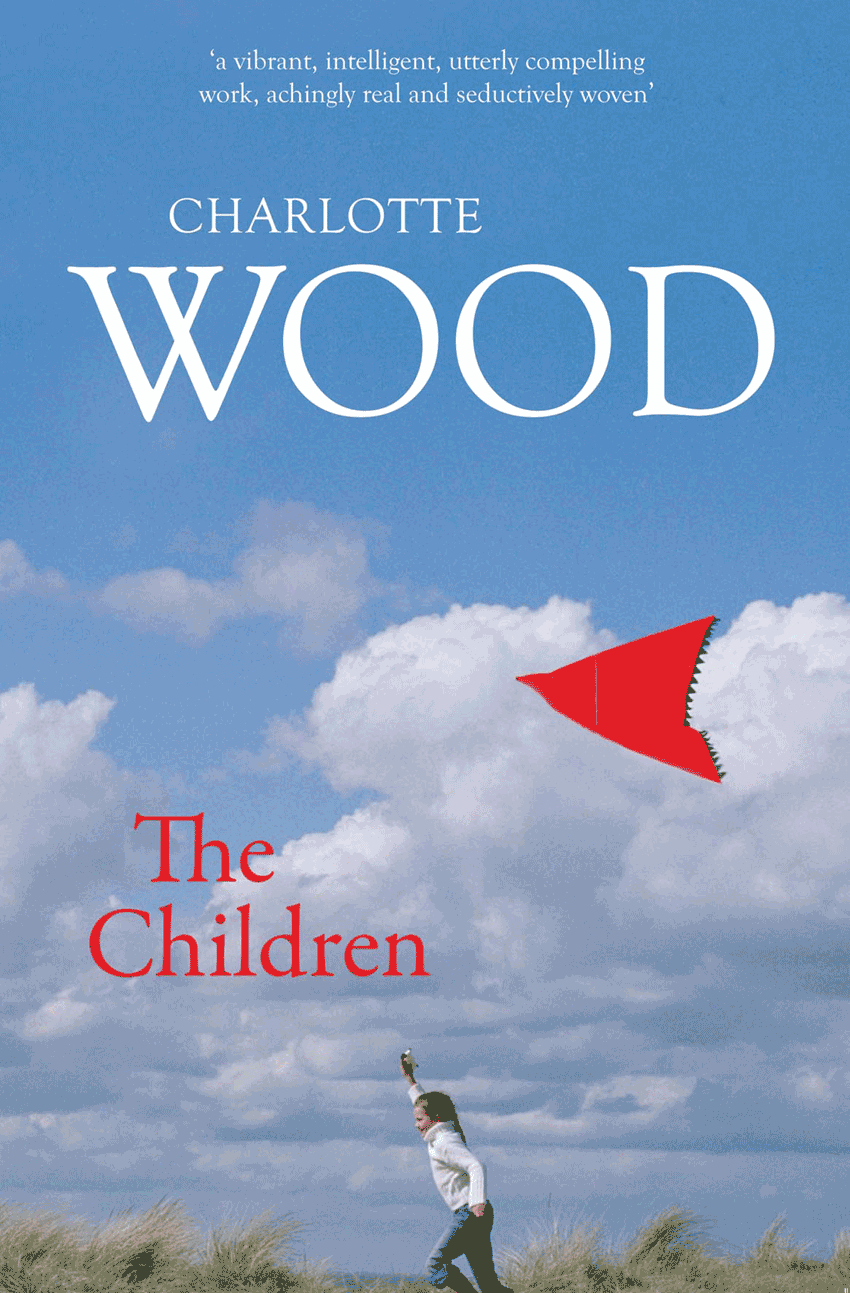
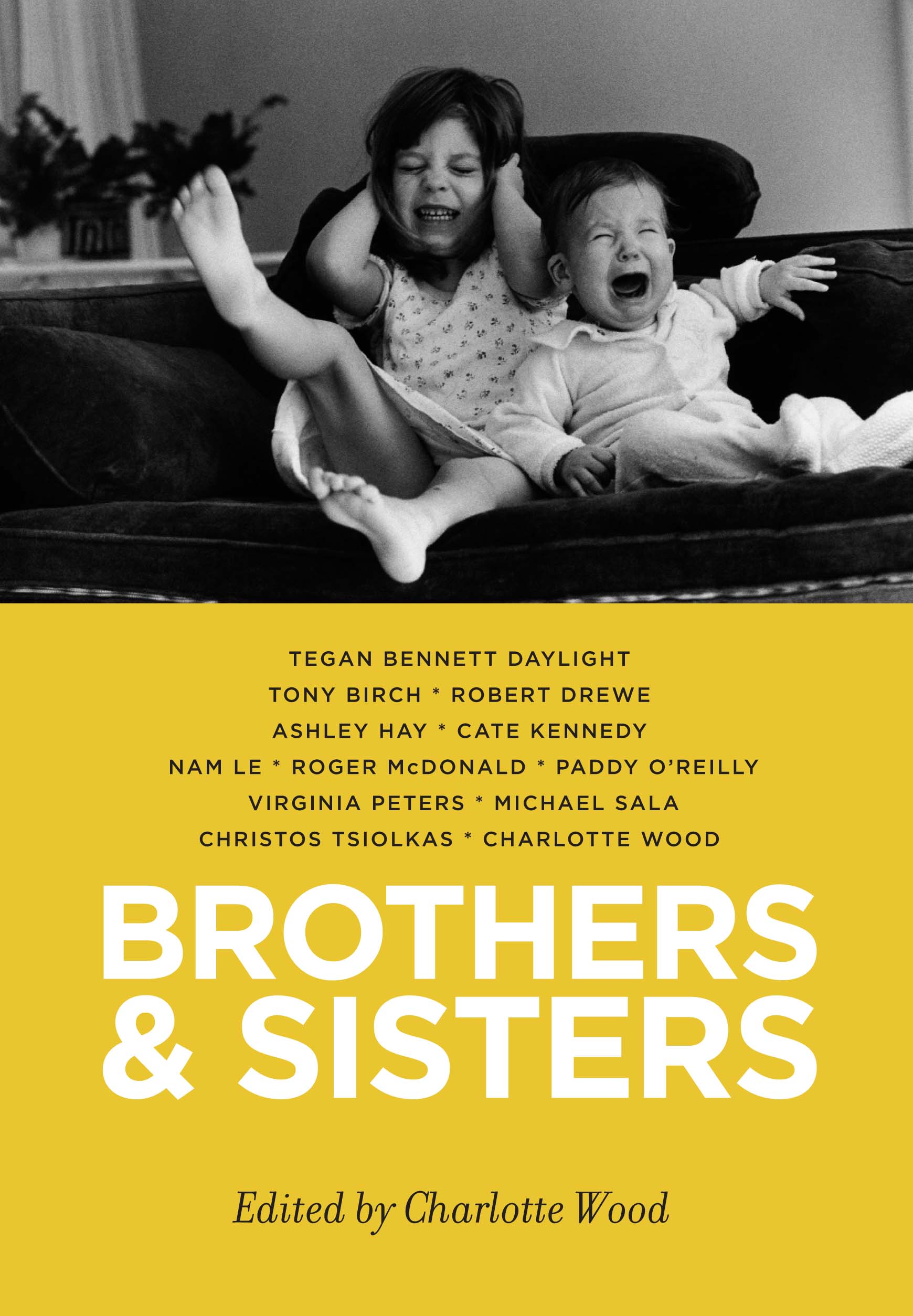
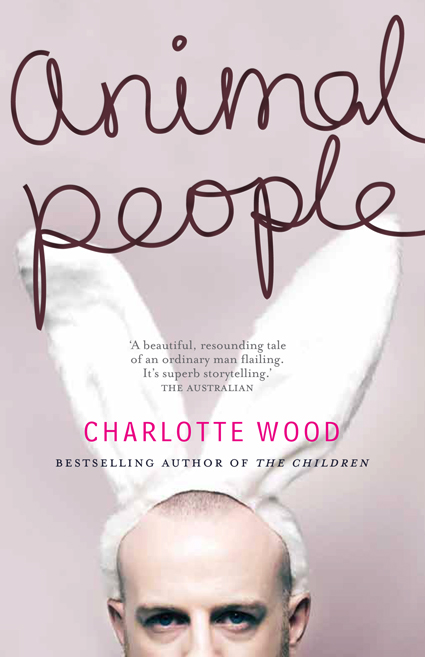
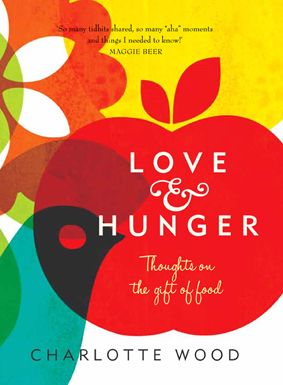
The Writer's Room Interviews
A magazine about the creative lives of writers, starting in February 2013. To subscribe click here.
ISSUE FIVE: JANINE BURKE
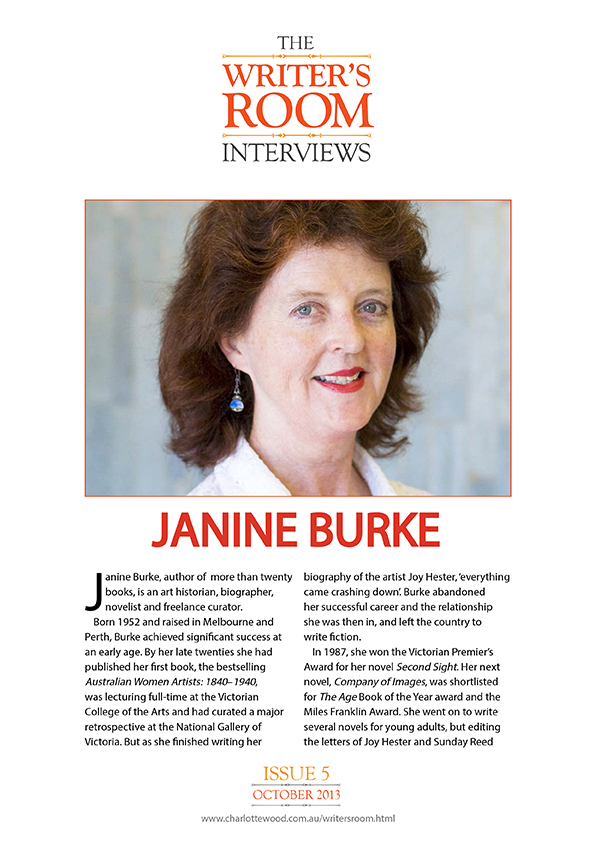 From the introduction
From the introduction
Janine Burke, author of more than twenty books, is an art historian, biographer, novelist and freelance curator.
Born in Melbourne in 1952, Burke achieved significant success at an early age. By her late twenties she had published her first book, the bestselling Australian Women Artists: 1840-1940, was lecturing full-time at the Victorian College of the Arts and had curated a major retrospective at the National Gallery of Victoria. But as she finished writing the biography of the artist Joy Hester ‘everything came crashing down’. Burke abandoned her successful career and the relationship she was then in, and left the country to write fiction.
In 1987, she won the Victorian Premier’s Award for her novel Second Sight. Her next novel, Companyof Images, was shortlisted for The Age Book of the Year award and the Miles Franklin. She went on to write several novels for young adults, but editing the letters of Joy Hester and Sunday Reed drew her back to art history, and it is for her biographies of the Heide circle artists she is best known. Australian Gothic, a biography of Albert Tucker, was followed by The Heart Garden: Sunday Reed and Heide. The Gods of Freud: Sigmund Freud's Art Collection, shortlisted for the 2007 NSW Premier’s award for non-fiction, is Burke’s internationally acclaimed survey of Freud’s personal collection. She began to explore the relationship between art and nature with Source: Nature's Healing Role in Art and Writing and, most recently, Nest: The Art of Birds. Burke has curated exhibitions to accompany many of her books, including Nest (showing at Frankston’s McClelland Gallery and Sculpture Park until October 6 2013).
I had met Burke a few times over the years (we are both published by the respected and popular Jane Palfreyman at Allen & Unwin) but it wasn’t until an A&U dinner at the Byron Bay Writers’ Festival a couple of years ago that I got to know her better.
Burke is a warm and forthright conversationalist. For this interview we met in her sunny apartment in Elwood, surrounded by many artworks (including a startling one by her beloved Joy Hester). In the hours we sat talking, drinking tea and eating almond biscuits, Burke was funny, curious and reflective, speaking frankly about the struggles and pleasures of the writing life. I could easily imagine her as the clever, rebellious schoolgirl banished from Catholic Ladies’ College for reading a provocative book. I came away from the interview inspired and energised by Burke’s lively, generous mind.
— Charlotte Wood.
About The Writer's Room Interviews
When Charlotte Wood read a magazine conversation between painters, it got her thinking.
"Not long ago, I read an old Artist Profile magazine interview with the painter Euan Macleod, conducted by another painter, Steve Lopes. It was about the former’s work, and was a wonderfully long, detailed, fascinating interview about the artist's process," she says. "I loved its depth, and the sensitivity and nuance arising from one artist talking with another, and felt a little sorrowful that there seemed to be nothing regular like this for Australian writers."
So - as an experienced journalist as well as a novelist - Charlotte decided to create something to fill the gap: a bi-monthly, subscription-based ‘magazine’, The Writer's Room Interviews.
Every second month from February 2013 The Writer's Room Interviews will publish a thoughtful, long-form interview with an established writer, inspired by the Artist Profile and The Paris Review 'art of writing' interviews beloved by so many writers. The Writer's Room Interviews will use the same Q&A format as those publications, and at a comparable length.
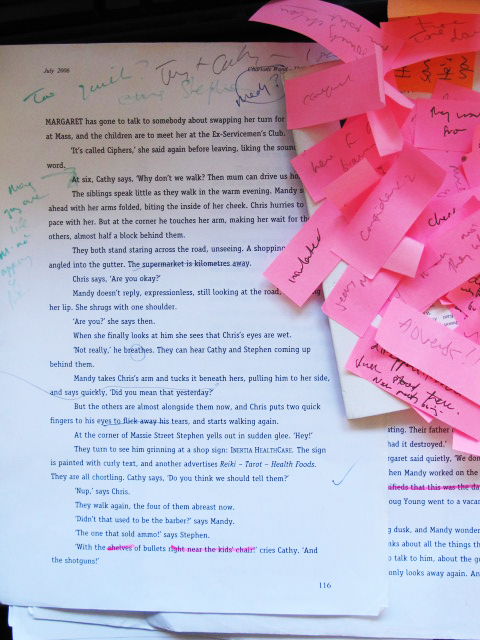 "While most writer interviews appearing online or in mainstream media are necessarily focused on the promotion of new books, I would like these interviews to feel slower, calmer and deeper," Charlotte says.
"While most writer interviews appearing online or in mainstream media are necessarily focused on the promotion of new books, I would like these interviews to feel slower, calmer and deeper," Charlotte says.
"I want them to illuminate something of the way a writer works - the hows and whys and mysteries and surprises of the creative process. For the interviewee, I hope it might feel like a calm, clear light falling over their body of work. At a time when the coverage of literature seems so fiercely focused on the turnover of product and prizes and promotion, I hope these interviews will stand, over time, as a record of how Australian literature is made - honouring the writers, their work and each of their particular creative tracks."
She sees the main readership for The Writer's Room Interviews as her fellow writers, general readers interested in the creative process and serious students of writing.
"Some of those appearing in its pages will be well-known, others will not. I'll be inviting writers to take part based entirely on my own reading tastes, and my hunches about who might have interesting things to say about the writing life. I want each arrival in the in-box to be an Oh! moment for readers - a choice that surprises, and an interview they will keep and return to over time for its richness and depth.
"The point of The Writer's Room Interviews won't be celebrity or accolades or life stories, but a deeper sharing of the creative experience among working writers across many genres."
The ‘magazine’ is a PDF file sent to subscribers by email.
"I realise that in the e-publishing world, PDFs and my chosen payment methods are old-school technology," Charlotte says. "But this publication is unashamedly old-school! I like to think of it as an interview cousin of the slow food movement - a return to simplicity and depth. Many of my potential readers have told me they want the option of printing the interview. This, together with the ease and low cost of production for a single person operation, has swayed my choice of format. I am really excited about it and keen to get started."
Subscriptions
A six-issue (one-year) subscription will cost A$27.50 ($25 + GST)– that’s one interview in PDF format received by email every second month. Subscription payment will be by Paypal or direct bank deposit.
The subscription cycle is February to December of each year - those who subscribe mid-cycle will receive all the year's issues to date upon payment. (E.g. Readers who subscribe in June 2013 will receive the February and April 2013 issues along with the June 2013 issue).
Make contact
To join The Writer's Room Interviews mailing list or to find out more: writersroom@charlottewood.com.au.